Burroughs by Coulthart (2001).
Lengthy article examining the WSB worldview through a Gnostic lens.
Via Further.
A journal by artist and designer John Coulthart.
William Burroughs
Burroughs by Coulthart (2001).
Lengthy article examining the WSB worldview through a Gnostic lens.
Via Further.
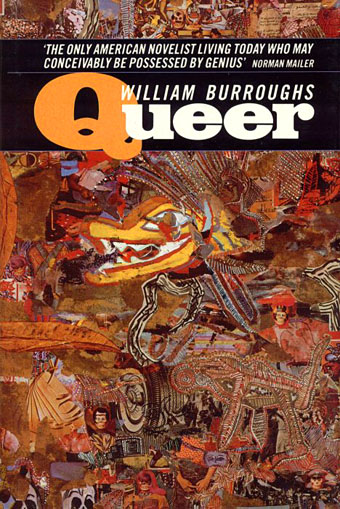
Shinro Ohtake is always on the attack. Whether it’s against misguided art education, against the cold treatment and economic constraints Japan puts on anyone who could dare to live differently, against the contemporary art establishment that can’t be bothered to even disguise its own incomprehension—his fight as an artist continues. Ohtake is prodigious, original, and a trouble-maker—in the sense that the work of the artist is always to create difference.
William Burroughs
Two disparate things had me looking for Shinro Ohtake‘s work this week: I’ve been doing a short interview about album cover design (more about that at a later date) in which I mentioned his collage for the cover of Seven Souls by Material (1989), then an editorial in the latest Wire describes his current retrospective exhibition at the Museum of Contemporary Art in Tokyo.
The Material cover is one I picked as a favourite design. It’s difficult trying to pin-point why I think this works so well without it being at all illustrational. (I’m guessing, but it’s likely that Bill Laswell picked it out of one of Ohtake’s collage books, rather than it being specially commissioned.) It may be the collage aspect that works here. The album features readings by William Burroughs set to music and for me is the best of all the Burroughs recordings (Dead City Radio being a close second). Burroughs’ work, of course, involved literary collage via his own cut-up process, and the musical content can also be seen as a collage in the way it mixes different styles and musicians—Simon Shaheen, Shankar, Rammellzee, Foday Musa Suso, Fahiem Dandan and samples of the famous Brian Jones recordings of the Jajouka pipers. It’s a shame that when the CD was reissued in 1997 (in a superior mastering, it should be noted), the original artwork was largely junked in favour of a lot of muddy Photoshop work from the usually excellent Russell Mills. I’ve a huge respect for Mills but this treatment was a serious mistake.
Elsewhere on { feuilleton }
• The album covers archive
Previously on { feuilleton }
• William Burroughs book covers
Lest we forget…
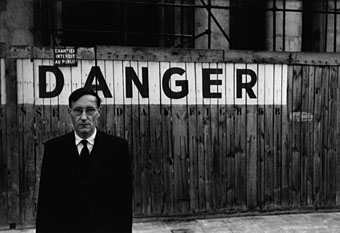
William Burroughs.
Thanksgiving Day, Nov. 28, 1986.
For John Dillinger
In hope he is still alive
Thanks for the wild turkey and the Passenger Pigeons, destined to be shit out through wholesome American guts —
thanks for a Continent to despoil and poison —
thanks for Indians to provide a modicum of challenge and danger —
thanks for vast herds of bison to kill and skin, leaving the carcass to rot —
thanks for bounties on wolves and coyotes —
thanks for the AMERICAN DREAM to vulgarize and falsify until the bare lies shine through —
thanks for the KKK, for nigger-killing lawmen feeling their notches, for decent church-going women with their mean, pinched, bitter, evil faces —
thanks for “Kill a Queer for Christ” stickers —
thanks for laboratory AIDS —
thanks for Prohibition and the War Against Drugs —
thanks for a country where nobody is allowed to mind his own business —
thanks for a nation of finks — yes,
thanks for all the memories… all right, let’s see your arms… you always were a headache and you always were a bore —
thanks for the last and greatest betrayal of the last and greatest of human dreams.• From Tornado Alley (1989).
Previously on { feuilleton }
• William Burroughs book covers
• Towers Open Fire
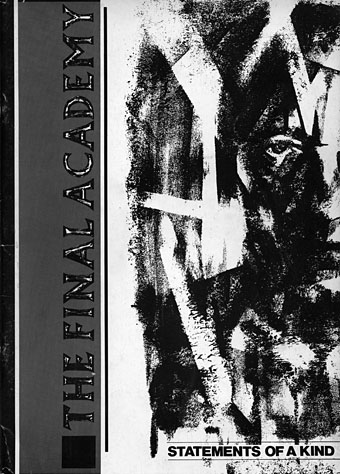
The event booklet, designed by Neville Brody.
William Burroughs’ reading in the city of Manchester took place on the 4th of October, 1982, at Factory Records’ Haçienda club, as part of the Manchester “edition” of The Final Academy, a Burroughs-themed art event put together by Psychic TV (Genesis P Orridge & Peter Christopherson) and others. A recent posting on the Grey Lodge is a torrent of The Final Academy Documents, the shoddily-produced DVD made from the low-grade video recordings that captured the event (originally an Ikon Video production from Factory). The DVD is so badly presented by Cherry Red that no one should feel guilty about downloading this.
I’ve always been grateful that a record was made of this event, however poor, since I was in the audience that evening, very conscious of the fact that this was my one and only opportunity to see Burroughs in the flesh. His appearance was the magical part of a scaled-down version of the larger two-day Final Academy that had taken place earlier that week in London. The rest of the event was either strange or underwhelming, not helped by the chilly and elitist atmosphere of Manchester’s newest and most famous club. In the days before “Madchester” and the rave scene (the period that gets excised from the city’s cultural history), the Haçienda was a cold, grey concrete barn with terrible acoustics and a members-only policy that required the flourishing of a Peter Saville-designed card at the door. The place was usually half-empty and the clientèle tended to be students living nearby.
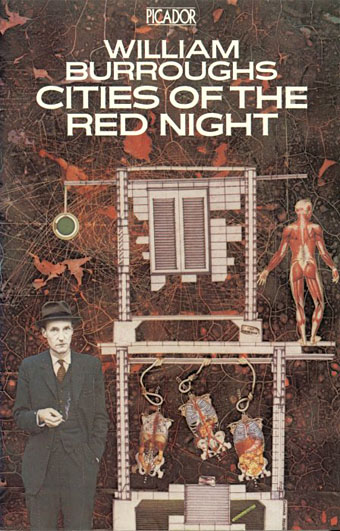
This site has a great selection of Burroughs’ cover art. By no means complete but pages like this are always fascinating for showing the variety of visual interpretations that can be brought to a single title. Also nice to see how books looked in their earlier editions before they achieved status as “classic” works. And sometimes you see odd book title variations, so Queer in some foreign editions has become Pederast.
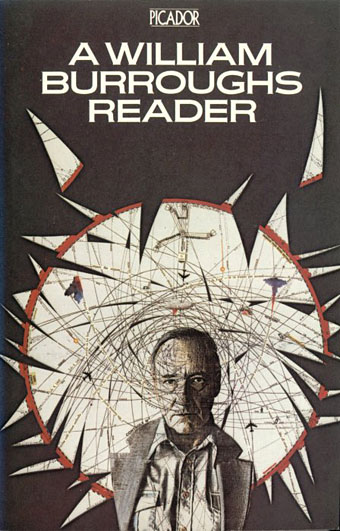
Too many great designs to choose from so I’ve picked out a couple of favourites by Thomi Wroblewski for Picador editions of the early Eighties. Cities of the Red Night remains my favourite Burroughs novel and I still toy with the idea of doing an illustrated edition one day.
Elsewhere on { feuilleton }
• The book covers archive
• The William Burroughs archive